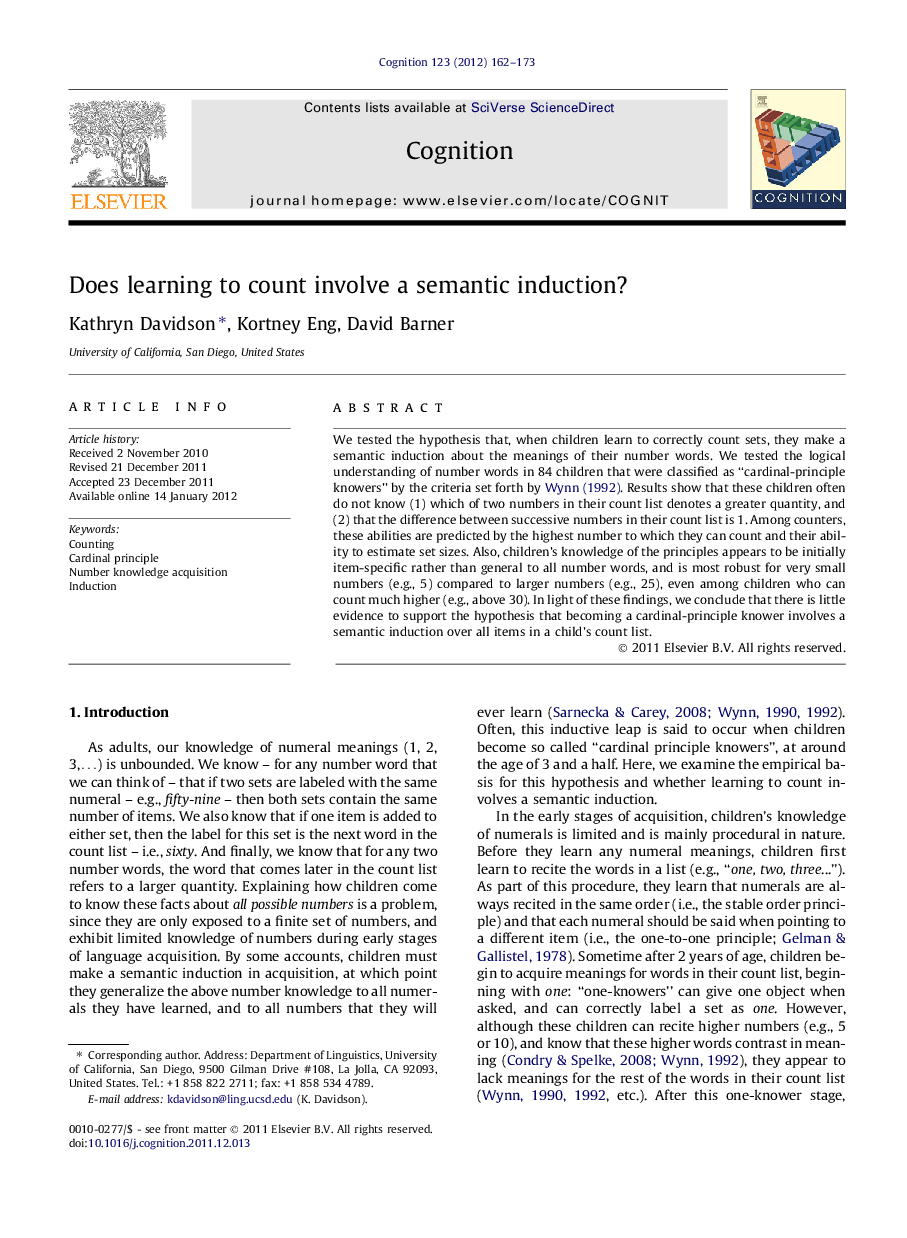| کد مقاله | کد نشریه | سال انتشار | مقاله انگلیسی | نسخه تمام متن |
|---|---|---|---|---|
| 926522 | 921874 | 2012 | 12 صفحه PDF | دانلود رایگان |

We tested the hypothesis that, when children learn to correctly count sets, they make a semantic induction about the meanings of their number words. We tested the logical understanding of number words in 84 children that were classified as “cardinal-principle knowers” by the criteria set forth by Wynn (1992). Results show that these children often do not know (1) which of two numbers in their count list denotes a greater quantity, and (2) that the difference between successive numbers in their count list is 1. Among counters, these abilities are predicted by the highest number to which they can count and their ability to estimate set sizes. Also, children’s knowledge of the principles appears to be initially item-specific rather than general to all number words, and is most robust for very small numbers (e.g., 5) compared to larger numbers (e.g., 25), even among children who can count much higher (e.g., above 30). In light of these findings, we conclude that there is little evidence to support the hypothesis that becoming a cardinal-principle knower involves a semantic induction over all items in a child’s count list.
Journal: Cognition - Volume 123, Issue 1, April 2012, Pages 162–173